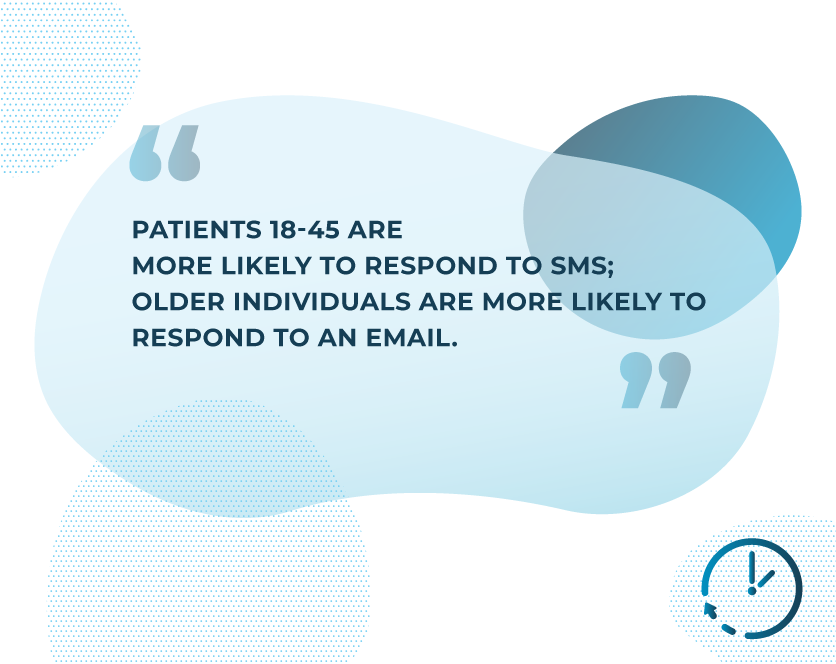Gathering patient feedback is a critical component of the success of any organization in the healthcare industry. Improving scores of patient experience surveys can feel insurmountable, but through data and analytics, it is achievable. Building relationships with patients to assure them that their feedback is essential and impactful can also result in increased revenue. Affecting the bottom line for providers by reducing cost per survey and communicating to patients that they are heard and seen is a win-win.
Though it may seem that patient feedback can feel like a necessary evil, there is a real impact if it is conducted with proper distribution, frequency, and speed. Survey results can answer questions that can dictate the success or failure of any practice.
Dr. Monica Federico, a pediatric pulmonologist at the University of Colorado School of Medicine and Children’s Hospital Colorado in Denver, wanted to know why a fifth of the appointments at the hospital asthma program were no-shows. They used survey data to cut the no-show appointment rate in half.
However, providers cannot meet the needs of patients if they do not respond. What is critical to garnering a response is the methodology that is used. Increasing the frequency of patient response rate is what will impact results. But first, data is needed. Using AI technology, Brenmor can streamline this process. What follows is a three-pronged approach to increasing patient engagement.
MULTI-CHANNEL DISTRIBUTION AND APPLIED LOGIC
Analyzing patients’ historical, preferred, and demographic profiling will determine the channel that best results in a response. An AI-driven, multi-mode distribution model, will maximize response rates. Brenmor’s strategic technology is proven to increase patient engagement. With the options of SMS and email, providers can meet different demographics at their preferred forms of communication. To improve patient engagement, mail surveys are not included as they are less accurate than other higher-tech options:
“Gathering patient feedback through mailed surveys may lead to an under-representation of some patient subgroups.” – National Institutes of Health
Since HIPAA requires a consent form from patients before being contacted, survey distribution should be conducted using the preferred contact methods provided by patients. If this is not provided, organizations can use their own means of logic to determine the best method.
AI-driven applied logic is data-based in nature, and this can be used to inform contact method choice. Patients 18-45 are more likely to respond to SMS; older individuals are more likely to respond to an email. This younger demographic also has a lower response rate than older generations. If no response is gathered after the first reminder, a second reminder can be sent using the same method (in this case, SMS). If there is still no response after a second reminder, a third reminder using the opposite method (in this case, email) is recommended. Data shows that switching contact methods increases response rate.
In some cases, preferred methods of contact communicated by patients are not the ones they engage with when presented with a choice. For example, if a patient responds to a survey using email but communicated a preference for SMS on their form, they would be initially contacted via email for future survey requests to maximize engagement.
The bottom line is multi-channel distribution method increases the response rate and reduces costs per survey.
SPEED OF CONTACT
Maximizing the time between when a patient is seen and when a survey is sent is highly recommended, as the speed of contact is critical to accurate patient feedback. There are multiple ways data can be obtained by Brenmor. One avenue is integrating Brenmor technology with EMR/EHR systems to gather information in near real-time, collecting data the same day and generating surveys the following day. That said, data exports can also be set at a customizable frequency to meet the best needs of the organization.
FREQUENCY
At its core, a continuous survey approach is a quality healthcare solution. In direct contrast with CMS, Brenmor conducts surveys year-round. Brief, digestible surveys at an increased frequency allow medical groups to address patient concerns and implement changes immediately to improve patient experience. They also provide ample time to prepare for the annual CAHPS survey. Providers have communicated trepidation around soliciting feedback at a high frequency. To combat this fear, a “rest period” where patients aren’t contacted for a period of time can be implemented.
Ultimately, determining the frequency of survey follow-up requests is an individual preference. Choosing between one or two follow-up requests and the timeframe in which reminders are sent is customizable to meet the needs of each provider or organization.
WHY IT MATTERS
The goal of increasing patient engagement is beneficial to both the provider and the patient as
an increased survey response rate builds trust and empowers patients. Providers can adjust accordingly to meet patients’ needs. The Brenmor analytics dashboard emphasizes how powerful data can solve problems and improve lives. When data is in the hands of providers, they can improve scores, their practice, and patient care—overcoming the challenges of score improvement with flexibility and customization to meet the needs of each practice.
The Commonwealth Fund, a foundation that supports independent research on health care issues, recently concluded:
“Involving patients in efforts to increase the safety, effectiveness, and experience of health care draws attention to problems that can deter people from seeking help and points the way toward potential solutions. Successful efforts have emphasized building trust by forging long-term relationships and educating patients on policies that affect them. Many also stressed the importance of two-way communication (e.g., responding to patients’ feedback, not just asking for it) and attending to problems that patients themselves prioritize, even if the issues lie outside the four walls of their organization. One systematic review found that the benefits of patient engagement accrue not just to patients but to institutions in the form of greater staff satisfaction and improvements in safety.”
Improving the quality of care in healthcare goes beyond simply soliciting feedback. Organizations should engage with survey responses to inform safety practices, build and strengthen relationships, and improve morale. It is a ripple effect that starts with using the correct methodology.
To learn how you can engage patients, speak with an expert today.
